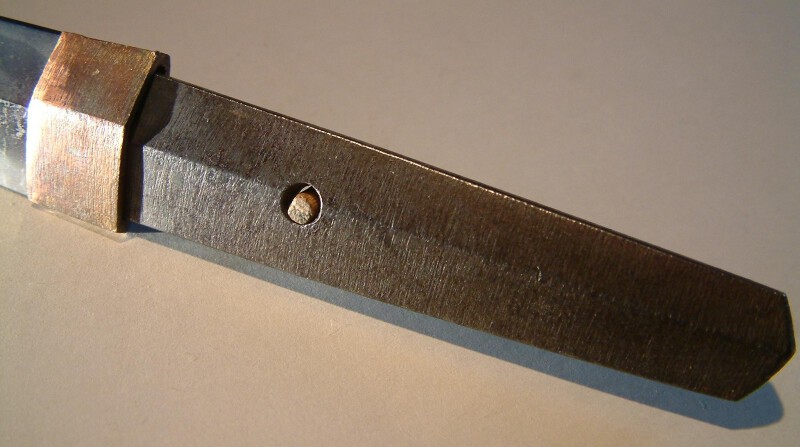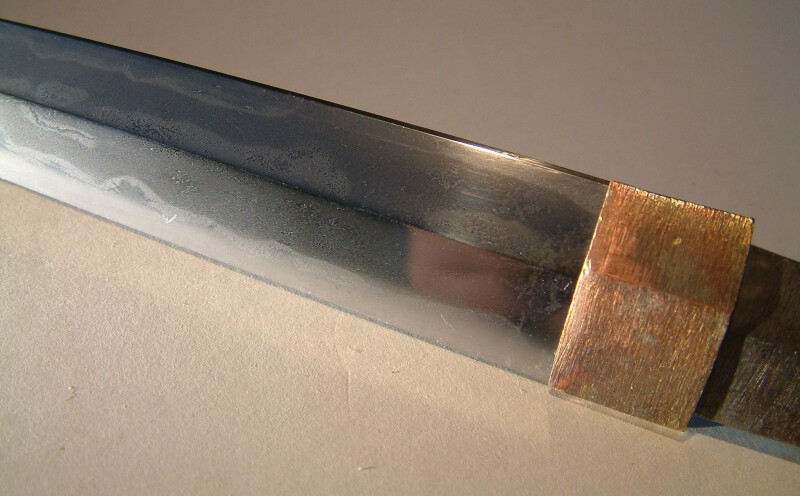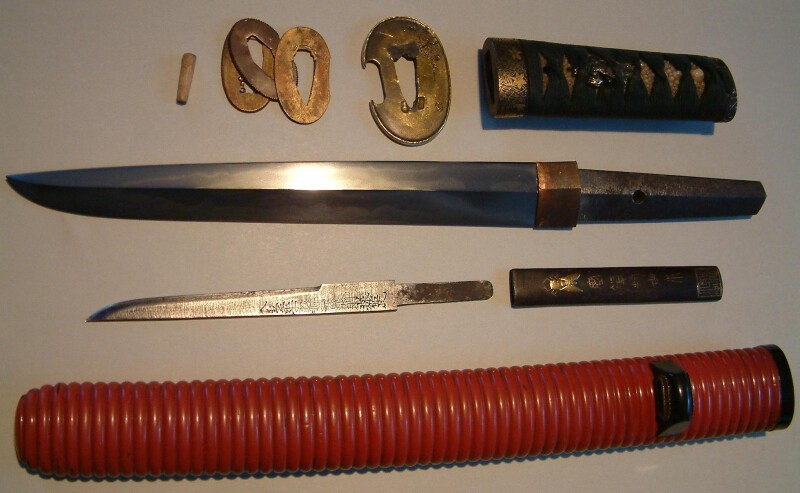
stephan_hiller
Gold Tier-
Posts
146 -
Joined
-
Last visited
Content Type
Profiles
Forums
Events
Store
Downloads
Gallery
Everything posted by stephan_hiller
-
Tom, AFAIK you will not be able to get papers for a showa stamped blade as they are regarded as not traditionally made and are seen as weapons of war by the Japanese government and therefore destroyed when imported into Japan. I think that only star stamped (and some other exotic stamps) are regarded as traditionally made swords with traditional materials (tamahagene) but showa, seki and other arsenal stamped swords are illegal to possess in Japan. For more information about the different stamps during WW2 please go to Rich Steins website. Regards Stephan
-
Hi Dirk, I am not from Belgium but from the Germany, but I think the processes in the EU are almost the same for the different countries. Whenever I import a sword from a non-EU country into Germany I am notified by the customs that a package arrived for me and I have to bring various papers to the customs to get the sword handed over. - Passport/ID card - Invoice (or an ebay printout) - any other papers that tell about the age of the blade (if available). The package then is opened at the customs and they inspect the blade and compare it with the printout. You eventually have to proof how much you paid for (e.g. printout of your bank account, displaying the sum). In Germany the customs then check the Internet (if it was purchased on ebay or another internet selling platform) to confirm the sum and that this auction really existed. Based on the total amount (auction price + dispatch costs) I have to pay 19 % VAT and 1,5 % import tax. You may avoid the import tax if you are able to proof that the item is over 100 years old. But the customs are very odd in accepting any ebay statements. They want a rather official certificate (in German) which is of course hardly to get when you did not have to sword in hand before. Therefore all in all I have to pay 20,5 % on the final price (which is quite a lot for basically no additional value). But that's the way it goes. In Germany with the customs checking either via Internet or wanting to see a printed bank account, there is hardly and space for cheating them. As a result I am trying to acquire swords from the EU but unfortuantely most of the interesting blades are sold in the US or in Japan. I hope this helps a bit even when I am not from Belgium :-) Stephan
-
Patrick, Many thanks for your quick reply. I had checked in my own Hawley's yesterday evening but must have been blind. I am in the office and don't have my books at hand, but will see today evening. Stephan
-
Brian, many thanks. Stephan
-
Hello, I have a mei of a naginata that I may want to acquire. The seller claims that the mei reads 'Kurume no ju Yoshitsugu' but it is in gyoshi and hard to read for me. I am only able to read 'Kurume X X X Minamoto Yoshi X'. Can anybody help with the correct may and if there has been a relation to Suishinshi Masahide. The seller also claims that this Yoshitsugu was a student of Suishinshi Masahide but I was not able to find antyhing in my reference books abouit a relationship. Thanks Stephan
-
Hello, I am now collecting Japanese swords for over 10 years but in all newsgroups and nihonto boards we usually only discuss about the quality of a blade and about the maker. What I am missing is more information about the various owner over the centuries. Unfortunately I don't have these information for my own swords. When I asked the seller about the history of the sword and where it came from it got the response that it was acquired either on a flea market or shop or was from a WWII vet. This even applies for swords that I acquired in Japan directly. I have no information about a samurai familiy who owned the sword or if the sword was taken to any battles or other historical background information. I am wondering if I am the only one who has no significatant information about previous (Japanese) owners/families. I know that there are high pontial swords out there where the history is well known (e.g. a famous WW2 generals where the swords was in familiy possession for several centuries) but I am talking more about the mid-range swords where the previous owners weren't very famous. Although I have no information about my swords I am sometimes thinking about what the sword may have "seen" and in which battle it may has participated. Do you have any more information about your swords and its owners than the seller where you got it from? Stephan
-
Stephan, Jean, many thanks for your quick reply. Regards, Stephan
-
Hello all, I have a friend who acquired an interesting and nice tanto some time ago. It is not in the standard shinogi-zukuri or hira-zukuri form but in moroha-zukuri. Can anybody tell me if the form had some functional purposes or was it just a matter of taste? Was there a preference for one shape or another in the Edo period or other periods? I assume the tanto is from the Edo period but if you think otherwise, please let me know. Stephan
-
Hello, I am searching for a good polisher in Europe to polish some of my swords. I know that some Nihonto purists never would have a sword polished by a non-fully trained Japanese polisher and I don't want to start a threat 'fully Japanese trained polisher vs selftaught polisher'. I have heard that there are some quite good guys in Europe which are able to polish medium quality blades but unfortunately I have no contact details. Is there somewhere a list or do some of you know some polishers in Europe and provide me with some impressions or pictures of their work (and contact details). I know that there are some good polishers in the US but I try to avoid to send the blades from Europe to the US and back. As I am in Germany I would be especially intersted in polishers in Germany but other European countries are fine as well. Cheers Stephan
-
Hi, I started collecting Japanese swords about 10 years ago when I first got access to the Internet. I have been interested in Japanese history since my teenager times but in Germany we had only very limited access to Japanese swords as we have far fewer swords available or on display than in the US. I aquired my first sword from an auction house (Manion's - not ebay) and later got it polished. I think in the last 10 years the situation in Germany with access to Japanese swords changed slightly. We have the European Branch of the NBTHK and the Internet really helps to find people sharing the same interest (e.g. have a look at the member list of the NMB and see how many people are from Germany). When I acquire a sword I have to like it. I do not care very much about the signature or the school. The blade has to be healthy and in nice shape - and if possible in at least decent polish. I rather buy a sword in acceptable polish than spend a lot of bucks for a fresh polish. Although I appreciate a 100% polish I also feel comfortable with 80% - 90 % If you are interested in my collection - please follow the link: http://www.nihonto.de Cheers Stephan
-
I recently acquired a huge yanagi-ba arrow head (45,3 cm or 17 7/8" from tip to the end of tang). The arrow head is very nice with sakura design in sugashi-bori. Usually these arrow heads are much smaller and I don't think that it can be used for shooting. Does anybody know for what purposes these arrow heads were made. Were they made for presentation only? I did not find very much about yanone in the Internet but maybe someone can recommend some books or links for further information.
-
Hello, as we all (should) know nakago cleaning (removing the rust) is an absolute NoNo for all serious collectors, but what about cleaning the habakis and up to which degree. Old copper habakis can have a very nice patina but how would you clean it? Use choji oil only to remove surface dirt. Would it be okay to remove the patina and to have a shiny habaki or would that also detract from the value of the sword/habaki? Stephan
-
Many thanks for the reply. Regards, Stephan
-
Hello, some years ago I aquired a nice Hizen Katana with NBTHK papers. The signature on the nakago reads 'Hizen (no) Kuni Masamitsu' but there are also to kanji characters on the other side which I can not read. Can anyone help me with the two characters and their meaning? Many thanks, Stephan
-
Hello, many thanks for the replies. After checking various Sukesada mei I suspect that my blade is not a Sukesada. I had a closer look at the mei and I now think that the last kanji reads "fusa". So it would be a Sukefusa, although I have not found a Sukefusa signing Yokoyama Kozuke. Stephan
-
Hi, some years ago I aquired a nice wakizashi with the mei YOKOYAMA KOZUKE (NO) DAIJO FUJIWARA SUKESADA. On the other side of the tang is another inscription which I am unable to read. I am not sure whether it might be a date or the owner's name. Help on translating the inscription would be highly appreciated. http://www.nihonto.de/Gallery/Sukesada/Sukesada.html Many thanks Stephan






